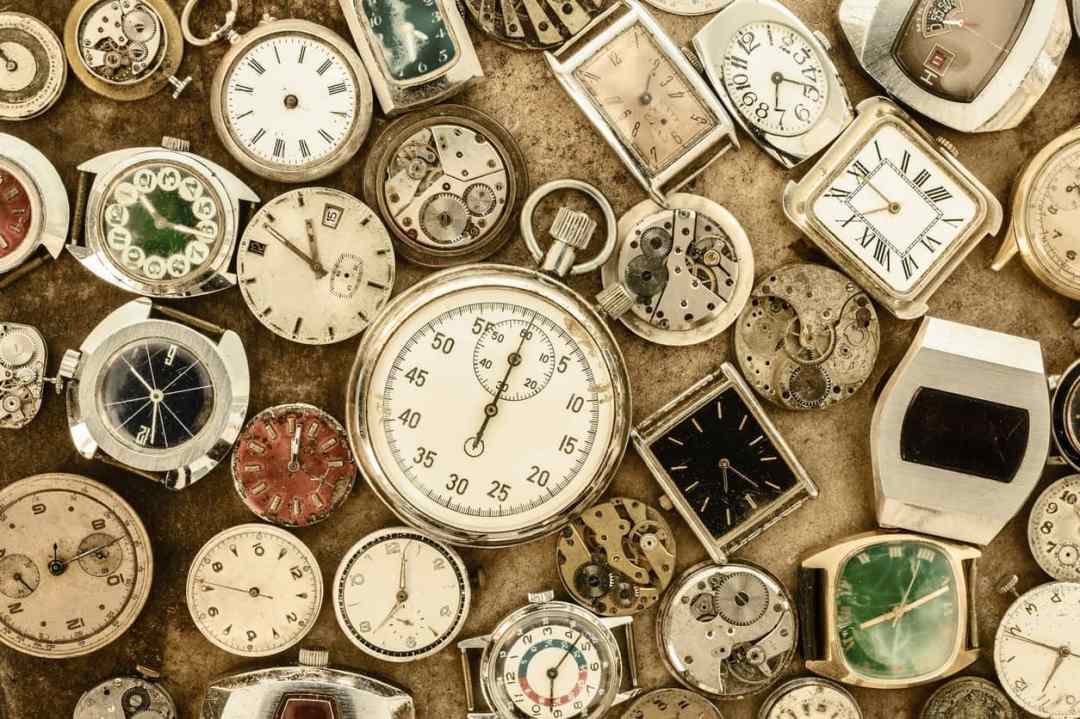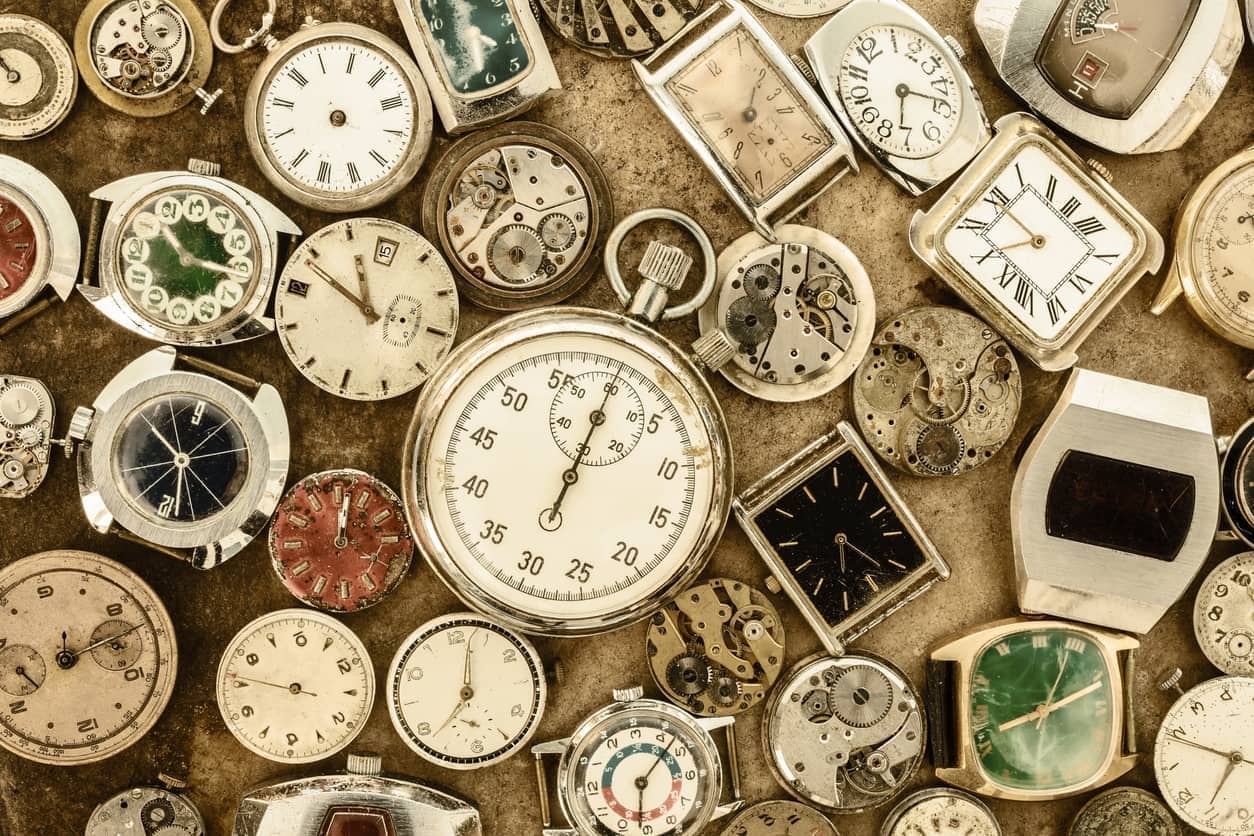It’s not so long ago that old watches used to turn-up at car boot fairs, charity shops and jumble sales (remember those?), usually in the form of unremarkable models set aside to be ‘got rid of’ after the grim reaper had called time on their original owners.
Back then ‘watch collecting’ had yet to benefit from the turbo-boost of the internet and remained an esoteric hobby enjoyed by scholarly types who had put the work in to discover the varied histories of all the best brands in the old-fashioned way: by reading books.
To everyone else, one second-hand watch was very much like another, regardless of the signature on the dial –unless, of course, it was a Rolex. Most people recognised those as being worth something, but less familiar makes were just unwanted objects made all the less desirable by the presence of the grime and dead skin cells left behind by their now-deceased custodians.
But how times have changed. Second-hand watches are not second-hand any more: they are ‘pre-owned’ or ‘vintage’ and values have soared for everything from the rarest Patek Philippe to humbler models from long-forgotten makers whose heritage has been ‘rediscovered’ through watch web sites or their revival by luxury goods groups.
The pre-owned market is now so strong that a recent report by management consultant McKinsey predicts sales of second-hand watches will hit $30bn within the next four years and account for 30 per cent of all online watch sales – compared with a current figure of five per cent for new watches.
Consumer appetite for used watches has inevitably led to a burgeoning in pre-owned dealers, with Richemont – owner of a range of blue-chip watch brands such as Jaeger-LeCoultre, Panerai, Cartier and Vacheron Constantin – even getting in on the second hand act with its 2018 purchase of UK-based pre-owned specialist Watch Finder.
Direct-selling site Chrono24, meanwhile, now attracts nine million visitors per month, with more than 60 per cent of buyers being aged between 18 and 39.
Such numbers have inevitably generated a certain degree of over-excitement, with Watcfinder claiming earlier this year that ‘luxury watches with a value of around $60bn are thought to be gathering dust and all but forgotten in the United States’.
The aim of the announcement was clearly to bring a few gems out of the woodwork – and there is no doubt that there are still some rare and expensive watches lurking in sock drawers and old shoe boxes all around the world.
Back in 2020, a well-worn Rolex Submariner from 1954 that was snapped-up in a Cairo souk fetched Sfr 400,000 at Phillips in Geneva despite having a broken bracelet and missing bezel insert. And recent years have seen Birmingham-based auction house Fellows sell two wartime Panerai Radiomir watches for more than £50,000 apiece, both having been turned-up by the offspring of British soldiers who had ‘acquired’ them from German Army divers during WWII.
Even more remarkable was the discovery of the actual Breitling Top Time that Sean Connery’s James Bond wore in the 1965 movie ‘Thunderball’ . It surfaced at a car boot sale in 2013 – where it was bought for £25, only to achieve £103,000 at Christie’s a short while later.
And in mid October online watch auction site WatchCollecting.com achieved £205,500 for a 1954 Rolex Submariner that was discovered among the inherited possessions of an oil industry geologist.
Which all goes to demonstrate that there are some valuable watches out there waiting to be discovered – but the suggestion by Watchfinder that we might all be unwittingly harbouring horological rarities beneath our beds is misleading. So don’t get too excited.
Good watches have always been expensive, and people who own them generally know what they are – and the vast majority of models left languishing in drawers and cupboards are by insignificant makers and usually of little resale value.
‘Stories of forgotten watches making large sums are lovely when they happen, but the reason they attract such attention is that finding such a watch is a bit like buying a big-winning lottery ticket – so vanishingly rare that, when it happens, it grabs attention,’ says Watchcollecting.com’s Adrian Hailwood.
‘The 1954 Rolex Submariner was found by the vendor in a box of effects left by her late uncle. It had no strap or bezel, but when she spotted the name on the dial she did a bit of basic Googling and realised she could have something valuable – although I don’t think she ever expected it to fetch more than £200,000.
‘Such events are really very rare . But what we have noticed is that people who own and wear a nice watch that they may have bought 30, 40 or 50 years ago are not necessarily plugged-in to the current market and often have no idea that the piece they paid £800 for in the ’70s could now be worth, say, £35,000.’
Experts like Hailwood note that trends can have a big effect on values. Vintage Cartier watches, for example, were all but overlooked 10 years ago. Now they are some of the most sought-after pieces on the market. Whilst the chances of uncovering an unknown fortune are slim, an astute choice of watch can still reap rewards.







Comments